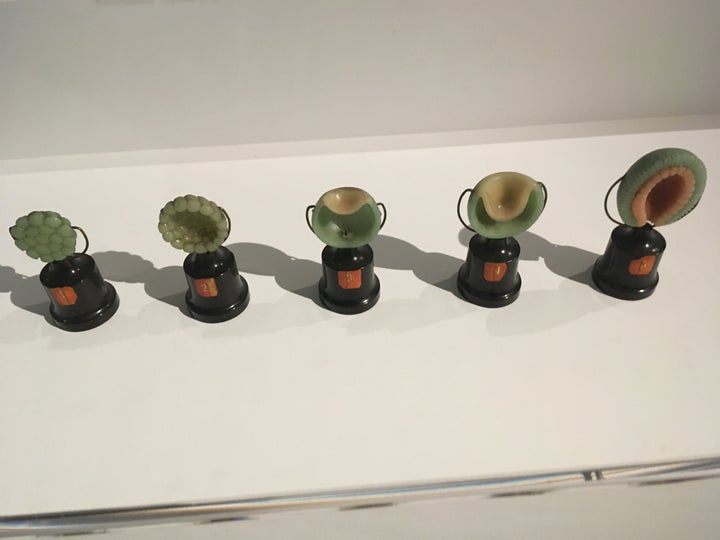
“In other words, what we call Form is a ratio of magnitudes, referred to direction in space. . . . When in dealing with magnitude we refer its variations to successive intervals of time (or when, as it is said, we equate it with time), we are then dealing with the phenomenon of growth”.--- D’Arcy Thompson
A mini-exhibit in Amsterdam of D’Arcy Thompson themes set up for the public to view by Dutch academics who recently held a private meeting on these subjects, seems clearly anticlimactic to the rich display offered the public at the centenary celebration of Thompson’s On Growth and Form book last month in Scotland. Indeed, the Dutch exhibit at Allard Pierson Museum (through January 8) appears largely a promotion for University of Exeter research fellow Gemma Anderson’s text on drawing research.
It could have been a far livelier exhibit in Amsterdam if other relevant science art had been showcased as well. I’m thinking of the color plates by Peter Sheesley for embryo geometry investigator Stuart Pivar, for example. And a page or two from Matthew Jarron’s D’Arcy comic book would clearly have cheered up the room:
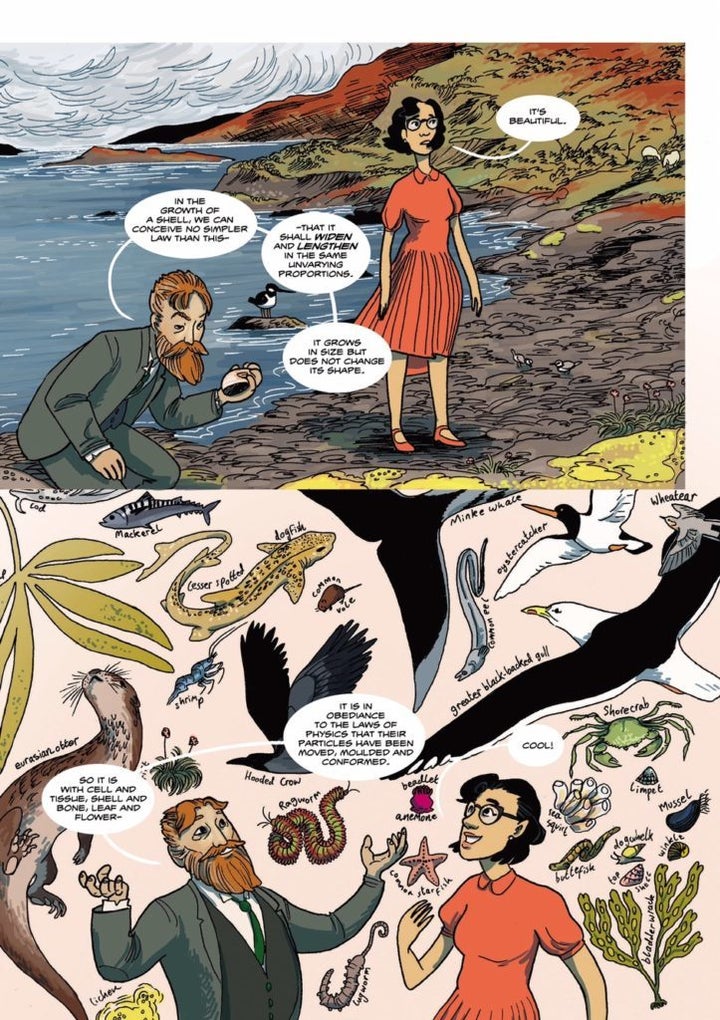
With the exception of a display demonstrating invagination---on loan from the Museum Vrolik---the Allard Pierson mini-exhibit is a bit of a bore.
On the other hand, Vrolik---an anatomy museum 45 minutes by train outside Amsterdam’s city center---is an astonishing place to visit for any serious researcher of human growth and form.
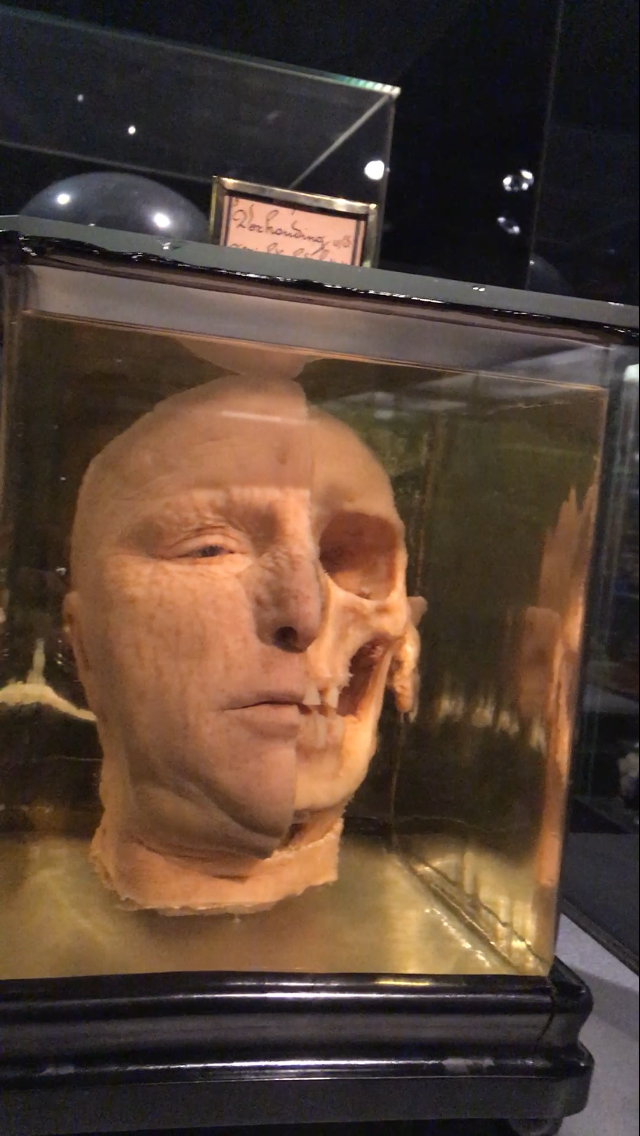
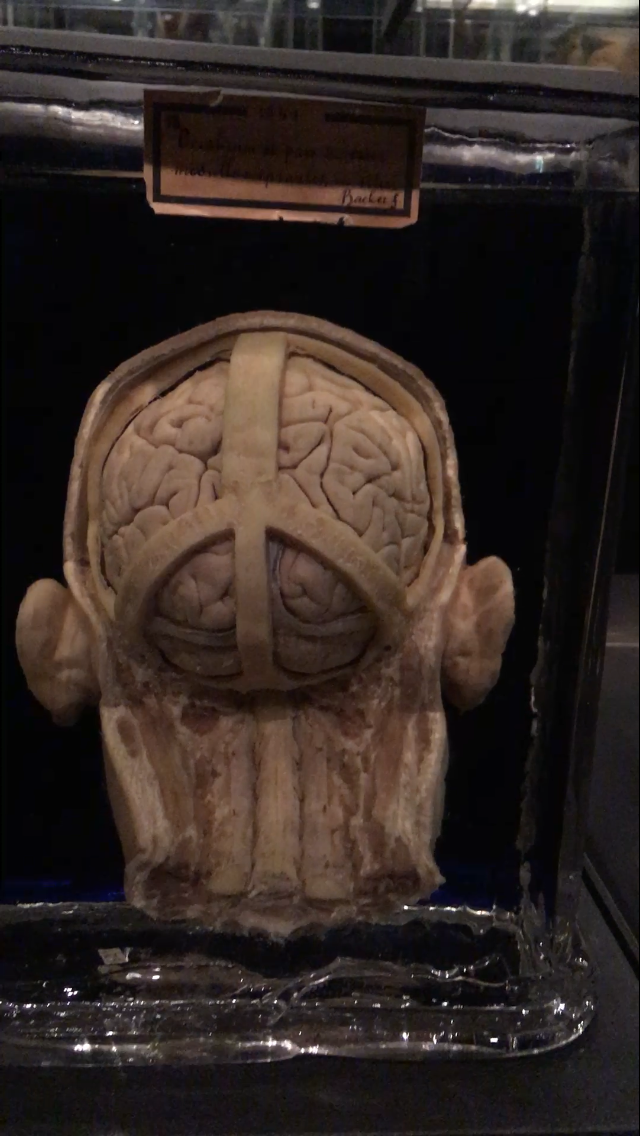
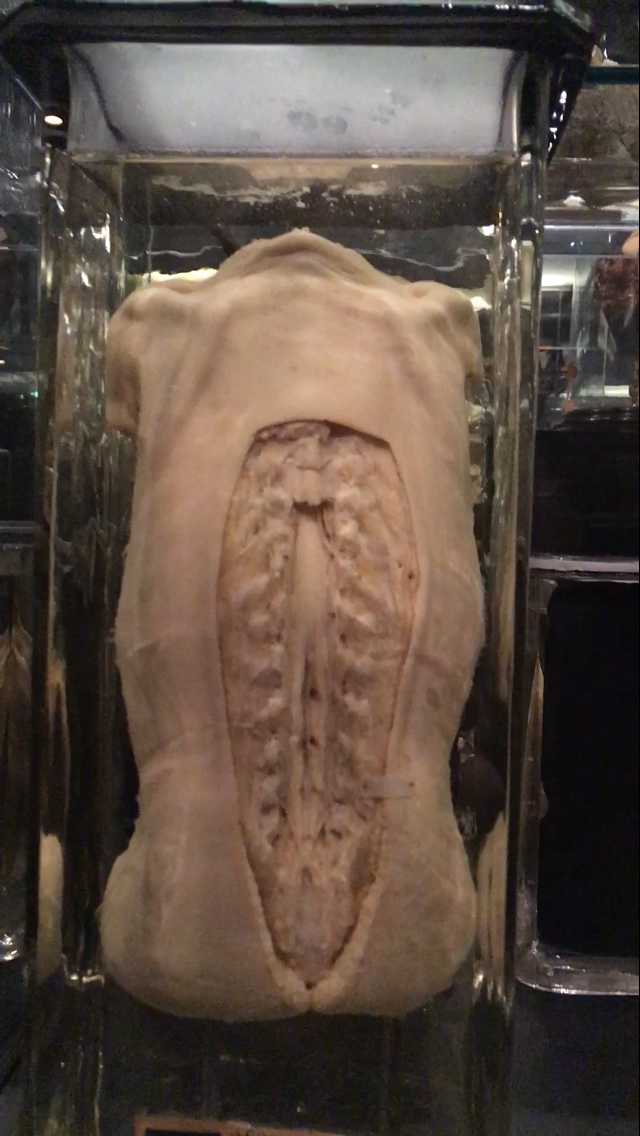
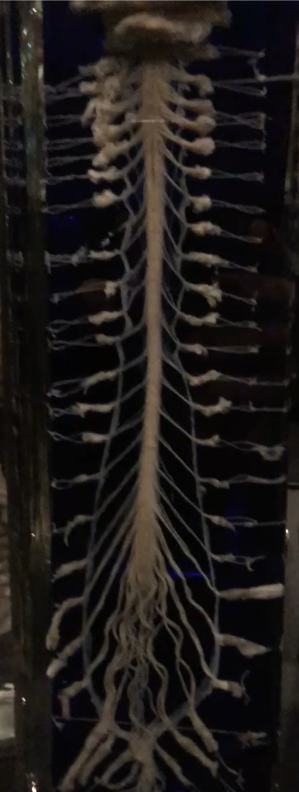
Set inside the Academic Medical Center (AMC), the museum houses 1,100 specimens, most dating from the 19th century. The present museum grew out of the private collection of two Amsterdam professors of anatomy---Gerard Vrolik (1775-1859) and his son Willem Vrolik (1801-1863). The tie-in to Thompson is obvious in the Vrolik displays of every part of the human structure. The collection also chronicles human development from earliest embryo to full-term fetus.
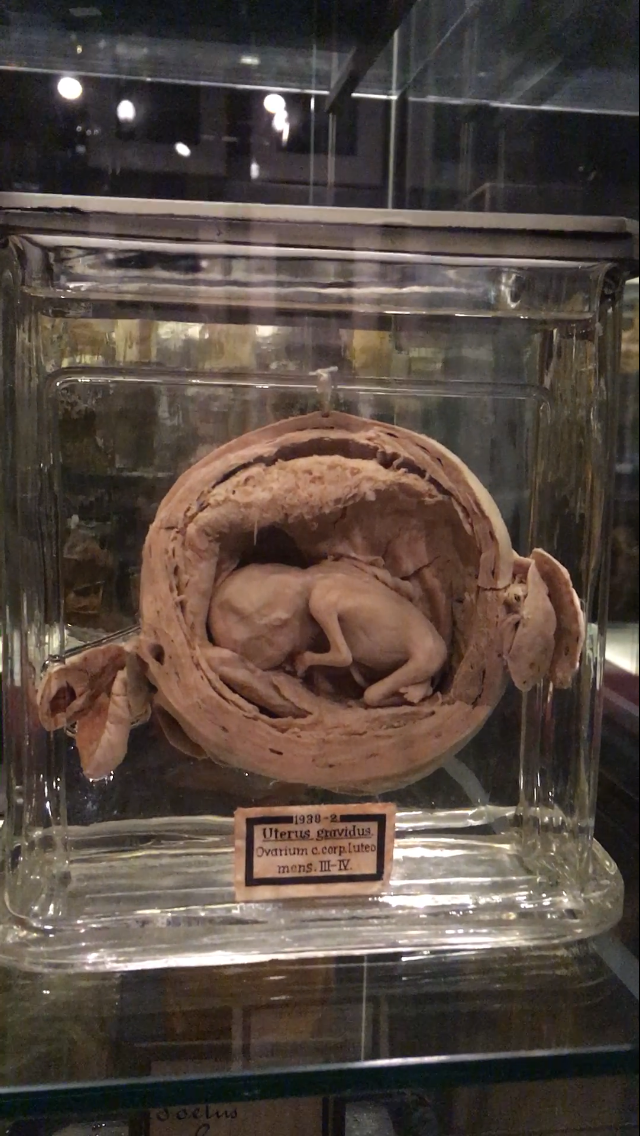
In his 1,136 page-long masterpiece, On Growth and Form, D’Arcy Thompson shares these relevant insights:
“The action of the molecular forces has been variously explained. But one simple explanation (or mode of statement) is that the molecules of the surface-layer are being constantly attracted into the interior by such as are just a little more deeply situated; the surface shrinks as molecules keep quitting it for the interior and this surface-shrinkage exhibits itself as surface-tension. The process continues till it can go no further, that is to say until the surface itself becomes a ‘minimal area.’”
“We have little reason to doubt, and no just cause to disbelieve, that the whole configuration, for instance, of an egg in the advanced stages of segmentation is accurately determined by simple physical laws, just as much as in the early stages of two or four cells, during which early stages we are able to recognize and demonstrate the forces and their resultant effects.”
“It will be seen at once that there is a ‘point of inflection’ somewhere about the fifth month of intra-uterine life; up to that date growth proceeds with a continually increasing velocity. After that date, though growth is still rapid, its velocity tends to fall away; the curve, while still ascending is becoming an S-shaped curve.”
But Gerard and Willem Vrolik were not only fascinated by form, as biologist/mathematician D’Arcy Thompson was---they were also intrigued by malformation. The Museum Vrolik shelves hold perhaps 100 glass containers of conjoined, cyclops, dwarf, and other abnormally structured babies impossible to describe here. What can go wrong, clearly did go wrong with pregnancies in the 19th century before modern medicine.
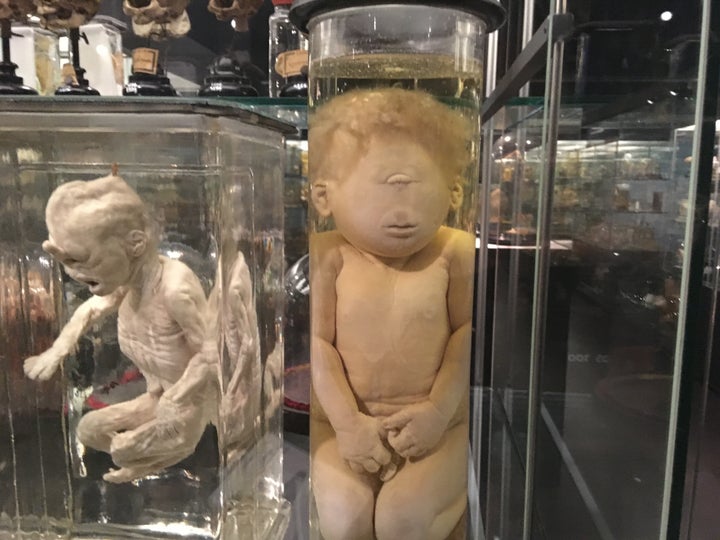
Unlike Philadelphia’s Mütter Museum, the Vrolik collection can be viewed without all the red tape. It is an education not to be missed.
